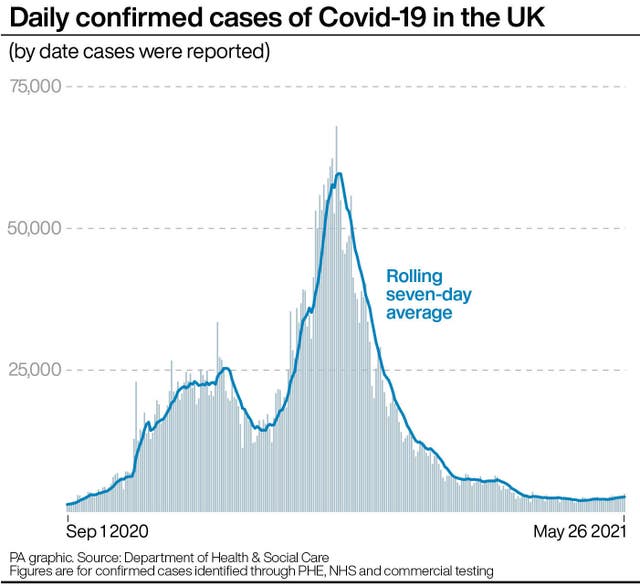Rise in Covid-19 cases not part of nationwide trend, figures suggest
Case rates in most areas continue to remain at levels last seen in late summer or early autumn 2020.

A total of 3,180 new UK cases of Covid-19 were reported on Wednesday, the highest daily number since April 12.
It is too soon to say whether this is part of a consistent upwards trend, however.
The number of cases reported each day has been broadly flat for the past month, sometimes dipping below 2,000 (most recently on May 17) but mostly staying between 2,000 and 3,000.
The seven-day rolling average has crept upwards slightly in recent days, but more data is needed to see whether this is the start of a continuous nationwide increase and not simply a short-term response to a spike in cases in a few hotspots.

Separate data for cases by local area suggests that only a small number of places in the UK are currently recording a rise in cases that is greater than the usual day-to-day fluctuation in numbers.
Of the 380 UK local areas, 169 saw a jump in Covid-19 rates in the seven days to May 22, based on the latest figures available for cases by specimen date.
But of these 169 areas, 113 recorded increases that were in single figures.
By contrast, Blackburn with Darwen in Lancashire recorded a week-on-week rise in rates of 168.3 (up from 145.0 cases per 100,000 people to 313.3), Clackmannanshire in Scotland saw a rise of 131.9 (from 29.1 to 161.0), and Bolton in Greater Manchester saw a rise of 125.5 (from 321.7 to 447.2).
Meanwhile, case rates in the vast majority of areas continue to remain at levels last seen in late summer or early autumn 2020, with around four in five areas currently recording rates below 30 cases per 100,000.
Today’s jump in the number of reported cases does not reflect a nationwide trend and, although cases have risen in some areas of the UK, it is too early to say whether these localised spikes are part of a broader pattern that could be linked to the recent easing of lockdown restrictions.





